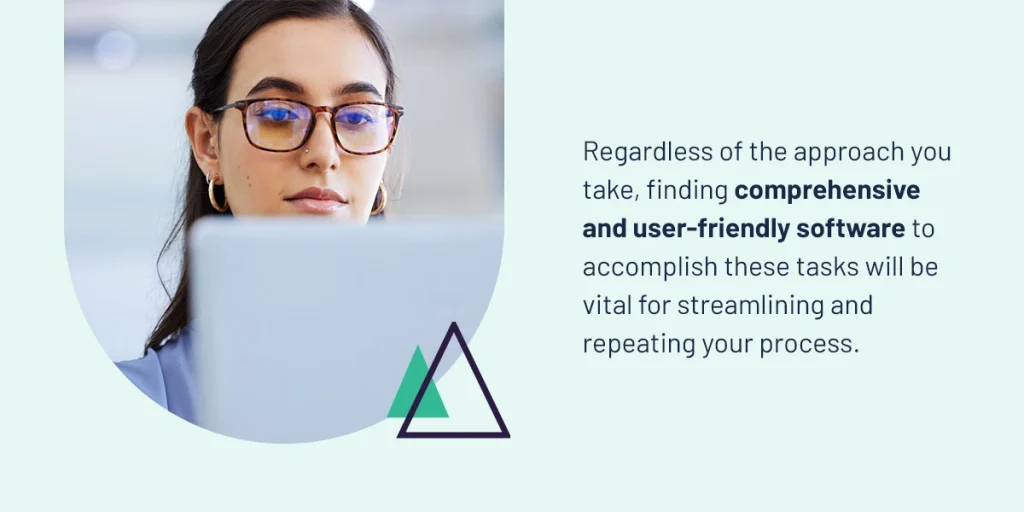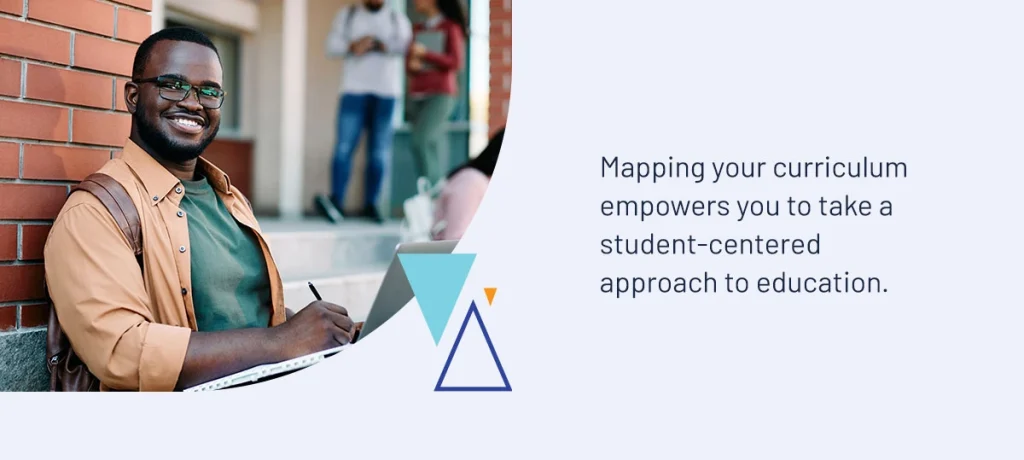




A curriculum map can be an incredibly useful tool in identifying opportunities for continuous improvement in your academic offerings. Curriculum mapping is one of the best ways to ensure teacher effectiveness in today’s data-driven world.
Here’s a look at how to utilize a curriculum map effectively for improving learning outcomes and enhancing the student experience.
A curriculum or course alignment map illustrates where educators can address and teach student learning outcomes. This process allows higher education institutions to identify gaps and provide opportunities for improvement. Although curriculum mapping offers immense benefits for students, colleges and universities can also use this process to meet institutional needs and objectives. This process empowers decision-makers to align curriculum with institutional standards, find assessment opportunities, and plan a sequence for instruction to provide the most value to each student.
There are many useful ways to build out your curriculum map. While the curriculum maps are dynamic in nature, they are typically comprised of four main parts:
In these examples, you can see where the outcomes are being introduced, reinforced, and mastered in the courses listed on the left, as well as where there is an associated assessment activity to measure outcome achievement.
Using comprehensive software like Watermark Planning & Self-Study, you can create unique curriculum maps. Every curriculum map you create in Planning & Self-Study comes with a default key that classifies learning outcomes into three levels:
These classifications provide a bird’s-eye view into the overarching story of your data. They enable you to easily determine how each course fits into your overall curriculum and the order in which each course should be taken.
The visual element of a curriculum map can also reveal where learning gaps exist, which can facilitate discussions about potential areas for refinement or optimization. For example, you may discover that students in your nursing program are missing opportunities for reinforcement of new concepts that have become essential in the field.
Learning how to use a curriculum map is a straightforward process with the right software at your disposal. The process for aligning outcomes and course content usually follows this process:
As your institution’s decision-maker, you understand your unique needs better than anyone else, and you may need to adjust this process to find the best solution for your students and institution. Some other tips for aligning course content with learning outcomes include:

Regardless of the approach you take, finding comprehensive and user-friendly software to accomplish these tasks will be vital for streamlining and repeating your process. The Planning & Self-Study platform makes it easy to affiliate courses and outcomes in just a few clicks. You can also choose the Introduce, Reinforce, and Master labels to indicate the value of alignment for each course. And after taking an action, your curriculum map will automatically update to reflect your changes.
Planning & Self-Study supports analysis of two types of outcomes:
Individual programs can also link course assessments in the curriculum map to provide additional depth. Faculty and staff can use this information to gain clear insights into how each course fits into the program’s overall goals for students.
You can also use this map to determine the best points for program assessments. Faculty can review and manage exactly where these assessments take place as well as the extent to which student efforts within each course contribute to achieving the intended outcomes — which will help assessment professionals plan future evaluations and collect data more effectively.
One of the most significant benefits of curriculum mapping is finding a straightforward way to align your institution’s content with institutional goals, educational standards, and mission statement. For example, you may need to meet specific curriculum standards to meet accreditation agency requirements, and curriculum mapping empowers you to stay on track and find additional growth opportunities.
You can also use a curriculum map to meet other institutional needs and goals, such as:

The goals you can meet with curriculum mapping do not stop here. Your institution is unique and aims to complete unique objectives. Thankfully, curriculum mapping is an excellent solution for meeting a plethora of higher education needs, and the process offers the flexibility you need to satisfy your college or university. With the right tools, you can drive growth at your institution and create a culture of continuous improvement.
Institutional use of curriculum maps allows faculty, administrators, and other stakeholders to see the bigger picture of assessment activity and the alignment of assessment efforts across campus to identify gaps and help with planning.
Overall, creating a curriculum mapping process that involves producing curriculum maps can be a useful — and satisfying — way to make the assessment process more engaging for your faculty and staff. You can use it for any set of program outcomes, institutional goals, or accreditation standards for which you need a visual supplement.
Discover how Watermark’s assessment and accreditation software solutions can streamline your curriculum mapping and assessment process by requesting a demo today.





























































































































































































































































































































































































